Ol Bhaate is boiled and mashed elephant foot yam combined with chopped onions, green chilles and a generous drizzle of mustard oil. Ol makha or oal ka bhartha is a popular dish in Bengal, Orissa and Bihar.
The name “Ol Bhaate” itself is a combination of two Bengali words: “Ol” – referring to elephant foot yam and “Bhaate” – meaning mashed or mixed with rice
This dish showcases the Bengali knack for transforming humble ingredients into something truly special.
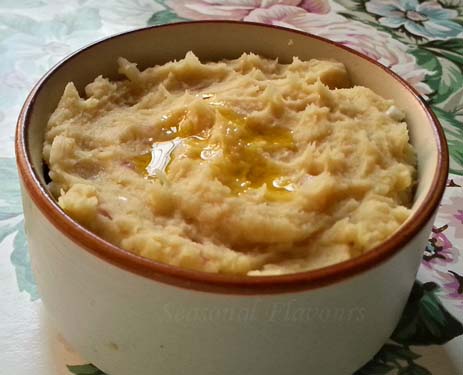
What is Elephant Foot Yam:
Elephant foot yam is a root vegetable that’s widely cultivated in India. It’s popularly called kanda gadda in Telugu, ol in Bengali, suran or jimikand in Hindi and chena in Malayalam.
Elephant foot yam, scientifically known as Amorphophallus paeoniifolius, is a tropical tuber vegetable widely cultivated in South and Southeast Asia. It gets its name from its appearance, which resembles an elephant’s foot.
Some key features of elephant foot yam include:
- Large, round tuber with rough, brown skin
- White or pale yellow flesh
- Slightly sweet and nutty flavor
- High in fiber and various nutrients
Calcium oxalate crystals present in the tubers cause an itchy sensation in the mouth and throat. Cooking ol with souring agents or adding sour juices to cooked or raw yam helps prevent this irritation. It’s always better to use tamarind or lemon juice when cooking Ol.
Health Benefits Of Elephant Foot Yam:
Elephant Foot Yam is a good source of carbohydrates, proteins and vitamins. It is rich in Vitamin A and dietary fibre content, which is good for weight loss. Ayurveda recommends elephant foot yam for treating asthma, bronchitis, abdominal pain, piles, dysentery and fatigue. Yam lowers cholesterol and blood sugar levels.
Bengali Ol Bhaate Recipe:
Ol Bhaate, a mouthwatering Bengali dish, is a culinary gem that deserves a spot on your dining table. This simple yet flavorful preparation of mashed elephant foot yam, also known as Bengali Mashed Elephant Foot Yam, is a staple in many Bengali households. With its unique taste and texture, Ol Bhaate has been winning hearts for generations.
Elephant Foot Yam is a versatile vegetable – you can add it to curries, soups, make kebabs, chips, stir fries or bake it.
Oal sheddo or Bengali mashed yams quickly serve as a tasty side dish to your meal. Raw mustard oil adds a pungent kick to this elephant yam dish. Pair this comforting mash with some hot steamed rice.
- For ol sheddo, firstly take 50 gms of ol. Wash the tuber thoroughly.

- Then peel the dark brown skin and chop the yam into large pieces.
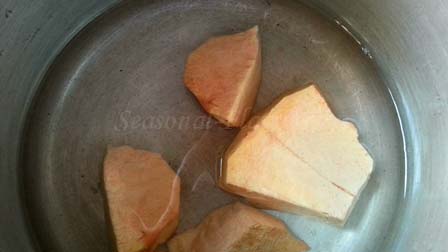
- Pressure-cook the oal with sufficient water till soft. Once the pressure releases, put the boiled ol pieces in a colander to drain out the water.
- Transfer the oal into a bowl; mash the yam well.
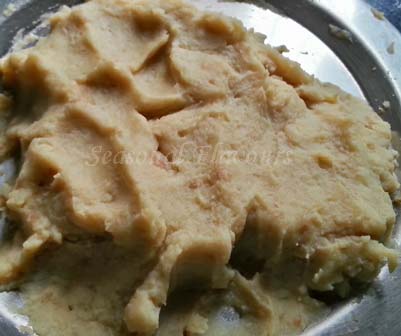
- Then add chopped onions, chopped green chillies, salt and mix well.

- Next, drizzle some lemon juice and combine well.
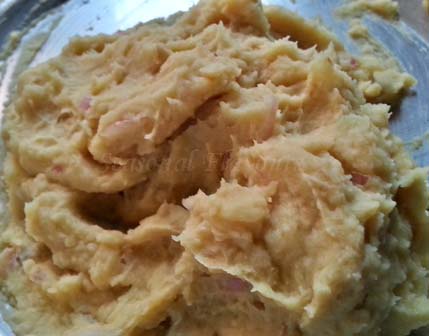
- Lastly, dribble mustard oil on top.
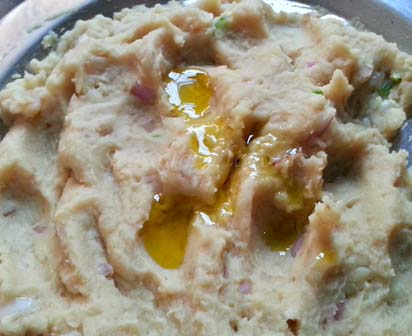
- Serve Bengali Ol Bhaate with rice, dal and papad.
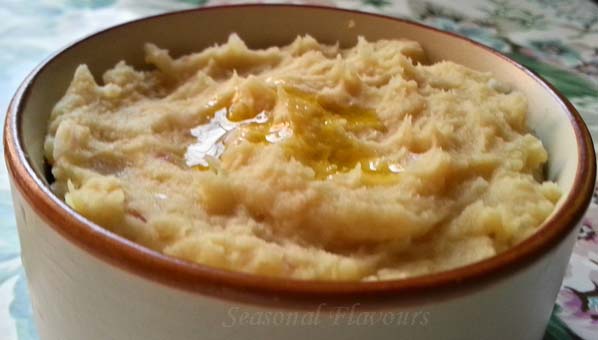
If you are searching for more Elephant Foot Yam recipes, then do try out Roasted Ol Recipe.
Ol Bhaate Serving Suggestions
Ol Makha is versatile and can be enjoyed in various ways:
- As a side dish with hot rice and dal
- As a spread on toast or crackers
- As a filling for sandwiches or wraps
- As a dip for vegetable sticks or chips
For an authentic Bengali meal, try serving Ol Bhaate with:
- Steamed white rice
- Bengali-style lentil soup (dal)
- Fried fish (ilish or rohu)
- A side of fresh green chilies
Variations of Ol Bhaate
While the traditional Ol Bhaate is a simple mashed preparation, there are several variations you can try:
- Oal ka bharta: Made with grated ginger, garlic and mustard powder
- Ol Bhaate with Posto: A Bengali favorite where poppy seeds are added for extra flavor and texture.
Elephant Foot Yam Recipe details below:
Ol Bhaate Recipe
Ingredients
- Elephant foot yam/Oal – 50 gms
- Salt – ¼ tsp
- Lime juice – ½ tsp
- Mustard oil - 1 – 1 ½ tsp
- Onion – 1 small, chopped
- Green chilli – 1 small chopped
Instructions
- For this mashed yam recipe, wash the oal well, peel the thick skin, wash once again and cut into large pieces. Pop the pieces into a pressure cooker (or boil it) with sufficient water and cook till soft. Let it cool.
- Drain and mash the elephant foot yam (you’ll get about ½ cup). Add salt, chopped onions, chopped green chillies and mustard oil. (Mustard oil adds to the flavour of the dish). Mix well.
- Drizzle some lime juice and combine well.
- Serve Ol Makha with hot white rice.
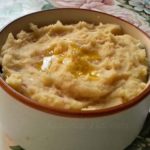
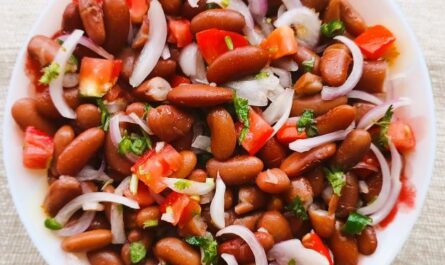
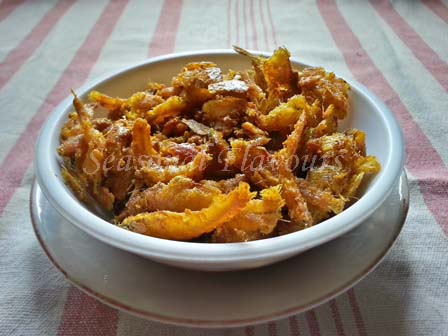
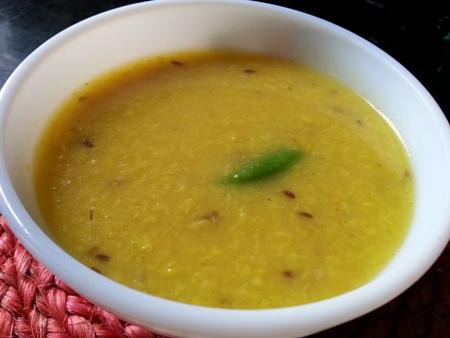
One thought on “Ol Bhaate – Bengali Mashed Elephant Foot Yam”